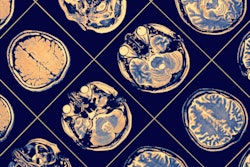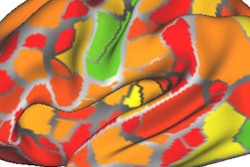CHICAGO - In a study using functional connectivity MRI (fcMRI), researchers found that patients with Parkinson's disease who more quickly pedaled a stationary bicycle showed positive brain changes associated with improved motor function. The results were presented on Monday at RSNA 2012.
Eight weeks of exercise on a tandem bike -- with the patients' pedaling speed tied to that of healthy front riders -- showed that the faster patients pedaled, the more cortical-subcortical functional connectivity increased, said Chintan Shah, a medical student at the Cleveland Clinic.
"There's a continuous relationship between pedaling rate and changes in connectivity," Shah said during a press briefing. "Regardless of whether you're in the 70 to 80 RPM or 80 to 90 RPM range, the faster you go, the more likely you are to have improvement."
The idea behind the experiment came from a serendipitous finding when lead investigator Jay Alberts, PhD, rode across Iowa with a Parkinson's patient on a tandem bicycle during a weeklong event.
The patient reported feeling better after the journey and said it was easier to use her hands. The project followed from those observations.
Exercise has been thought to have beneficial effects on Parkinson's disease, Shah noted, but studies have shown inconsistent results.
The research team decided to use fcMRI -- which measures changes in blood oxygenation in the brain -- to assess whether exercise rate can affect functional connectivity between various brain regions involved in Parkinson's.
The study included 26 patients 30 to 75 years of age who were diagnosed with stage II to III Parkinson's disease. The patients were randomly assigned to voluntary exercise or forced levels of exercise on a stationary bike. Forced levels were defined as 30% above normal exercise rates. The forced levels of pedaling were achieved by riding a tandem bike powered by a healthy volunteer. The patients completed the exercise sessions three times a week for eight weeks.
fcMRI scans were done at baseline, after the eight weeks of exercise, and again four weeks later for follow-up. Shah and colleagues correlated brain activity and connectivity data with average pedaling rates.
They found that certain regions of the brain showed a strengthening of connectivity with faster pedaling rates. Increases in task-related connectivity were seen between the primary motor cortex and the posterior region of the thalamus, and the improvements were still seen at the four-week follow-up.
"Although we still don't understand exactly how it works -- how exercise can influence the way your brain is connected -- studies such as this one are a first step toward a better understanding of how the brain works," noted Dr. Max Wintermark, chief of neuroradiology at the University of Virginia, who moderated the press conference.


.fFmgij6Hin.png?auto=compress%2Cformat&fit=crop&h=100&q=70&w=100)





.fFmgij6Hin.png?auto=compress%2Cformat&fit=crop&h=167&q=70&w=250)











